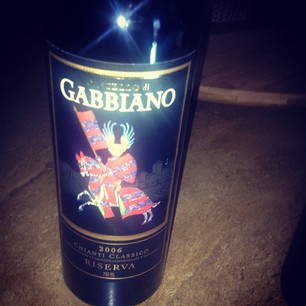In most parts of the world, except Sauternes and Australia, Semillon is a lesser known white grape compared to Chardonnay, Riesling or Sauvignon Blanc. That is a shame because Semillon is an amazing grape highly influenced by terroir and goes well with a wide variety of food. I love Semillon with eggs (my breakfast wine with an omelet or fritatta!). It also goes well with Thai food, Indian food, pesto (at least I hope so because I am going to try that this evening!), denser fish, and some crustaceans.
It also goes well with cheese or on its own. In fact, I am drinking a glass now as I write this blog. I have a rare opportunity to spend the next few hours uninterrupted, writing and drinking wine, and my wine of choice this afternoon is Semillon. I must admit that I thought a Riesling would go nice with the chicken and spiral pasta with pesto meal we are having tonight, but I wanted to try a Semillon, especially the one featured in this post, which is the 1999 Moss Wood Semillon.
Frankly, I only drink Semillon from the Hunter Valley or Botrytis Semillon in dessert wines from Sauternes; such as the world famous and world best Chateau D’Yquem (which I claim is the best wine in the world in a previous post). Why would you do anything else? Hunter Valley Semillons are without comparison. I have had some Semillon from Margaret River blended with Sauvignon Blanc in the Pierro LTC which is an excellent wine for the money and the 25% Semillon makes the Sauvignon Blanc actually drinkable and a good wine to match with fish. I do not enjoy Sauvignon Blanc as a grape. For starters, it is the most identifiable and pronounced tasting grape there is. If you cannot blind taste a Sauvignon Blanc, you are going to have a tough time recognizing any other type of grape. Sauvignon Blanc just does not have the subtlety of flavor that the other grapes do. People often describe Sauvignon Blan as tasting like “cat’s pee!” This should be all the commentary we need to steer away from Sauvignon Blanc!
I was recently given a bottle of the 1999 Moss Wood Semillon. Moss Wood is one of the premier wineries in the Margaret River and makes a magnificent Cabernet Sauvignon. Therefore, if I was going to experiment with a Semillon away from the Hunter Valley, this would be a good one to try.
This wine is very flavorful with melon tastes and still has some acid. However, it is not well balanced and seems like the flavors are fighting with each other and fighting my palette. With 13 years of age, you pick up some great flavors (and it does have a beautiful color which provides anticipation that this will be a great wine – only to disappoint once you drink it), but for a museum Semillon, one could do far better back in the Hunter Valley. (See my post on Museum Semillons for some great recommendations.)
I was told this wine had some variability with the corks, but the cork I removed was in perfect condition. The bottle I have opened is as good as it is going to get for this wine. It is enjoyable enough to drink and I will continue to write with a glass at my side and have some more with dinner, but it would not be among my favorites. Twice I have brought this wine over to friends for a meal, but have not opened it, and glad I am tasting it alone as this is not a wine that I would delight in sharing. Again, it is decent enough to drink, but with so many great, inexpensive wines, why go with a ‘decent’ wine?
If you are going to go for Semillon, make sure to get it from the Hunter Valley, or Sauternes if you can afford it!













